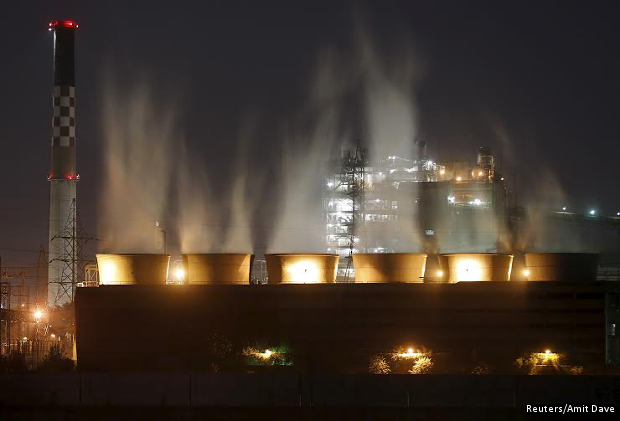Your Energy Consumption Up 46% Since 2000, Still Third Of Global Average
India's per capita energy consumption grew 46% over the last 14 years, but it is still a third of the global average, according to the International Energy Agency's India Energy Outlook Report 2015.
Every Indian consumed 0.61 tonne oil equivalent (toe) in 2013, while the global average was 1.9 toe, the report said.
The average US citizen consumed 11 times, the average European (living in the European Union) five times and the average Chinese four times as much as the average Indian in 2013.
Source: India Energy Outlook 2015; Figures in tonne oil equivalent (toe)
Despite a rapid expansion of India's power system, nearly 240 million people have no electricity, and that is why India's per capita consumption is low, the report said.
The average per capita consumption of energy in India is about 900 units—60% of 15,000 units a year for developed countries.
Electricity accounts for 15% of final energy consumption in India in 2013—an increase of four percentage points since 2000. India's electricity demand in 2013 was 897 terawatt-hours (TWh)—more than twice the demand in 2000 (376 TWh).
Source:India Energy Outlook 2015; Figures in TWh;
Coal command's India's energy mix
Nearly 75% of India's energy demand is met by fossil fuels, mainly attributed to the rapid rise in coal consumption and decreasing role of bio-energy, the India Energy Outlook report said.
India's coal consumption is up by a little over 3% between April and August 2015, according to this Greenpeace report, while global coal consumption reported a fall of at least 2.3% and possibly as much as 4.6% between January and September 2015.
India produced almost 340 million tonne of coal equivalent (Mtce) in 2013 but it also imported some 140 Mtce, roughly 12% of the world's coal imports (61% from Indonesia, 21% from Australia and 13% from South Africa).
Coal accounted for 44% of India's primary energy demand, as coal-fired power generation grew, as did the use of coking coal in steel industries in 2013.
Source: India Energy Outlook 2015; Figures in (%)
Oil accounted for 23% of the energy mix in 2013. Similarly, natural gas made up a relatively small share of the energy mix (6%) in 2013 compared with 21% globally.
Coal accounts for 61% of India's total installed power generation capacity, with thermal power contributing 70% of India's total energy mix, according to a Central Electricity Authority (CEA) of India report.
Source: Central Electricity Authority – 2014, 2015; Figures in GW;
Coal reported 11% year-on-year growth from October 2014, while the use of diesel for generating power declined 17% in 2015 over 2014.
India's coal consumption is expected to reach 1,300 Mtce in 2040. The share of fossil fuels in India's energy mix, led by coal, will increase to 81% by 2040 from 72% in 2013, according to this Mint report.
India is the world's third-largest emitter of greenhouse gases after China and the USA. The energy sector contributes the most, 57.8%, of greenhouse gas emissions, of which electricity makes up the major share of 37.8%, according to the Indian Network for Climate Change Assessment (INCCA) report, 2010 titled 'India: Greenhouse Gas Inventory-2007'.
India has agreed to source a quarter of its installed electricity capacity from non-fossil fuel-based energy resources—or renewables—by 2030 in its recently submitted Intended Nationally Determined Contributions (INDC) plan to the United Nations Framework Convention on Climate Change (UNFCCC).
India has also committed to reduce the emissions intensity of its gross domestic product (GDP) by 33-35% by 2030 from the 2005 levels.
India has pledged to create an additional carbon sink of 2.5-3 billion tonnes of CO2 equivalent through additional forests by 2030.
(Mallapur is a policy analyst with IndiaSpend.)
_________________________________________________________________
"Liked this story? Indiaspend.org is a non-profit, and we depend on readers like you to drive our public-interest journalism efforts. Donate Rs 500; Rs 1,000, Rs 2,000."



